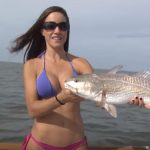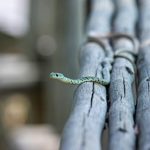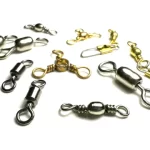In the oil-field town of Big Lake, West Texas, my upbringing revolved around outdoor adventures. Despite the town’s ironic lack of a permanent lake, my family and I spent our summer weekends angling. We’d embark on predawn journeys, driving over two hours to the Amistad Reservoir, nestled at the juncture of the Rio Grande, Pecos, and Devils rivers. Our pursuits mainly aimed at catfish via trotlines and trophy bass through lure casting. However, occasionally, we’d hook one of the bizarre gar species, which we regarded as mere nuisances. In those days, we believed that dispatching these fish with a well-aimed knee strike before returning them to the water was a service to our treasured game fish. How wrong we were.
During my childhood, I’d hear stories, like the one about an alligator gar, the largest among the gar species, snatching a pet toy poodle belonging to vacationers who allowed their dog to swim in one of the lake’s coves. I considered it nothing more than a tale spun by my uncles to keep me closer to the boat during the sweltering summer days.
Years later, after college, I relocated to Dallas, eventually settling on the northern banks of Lake Ray Hubbard in Rockwall to raise a family. One evening, as I scrolled through my Instagram feed, I stumbled upon a photo of a fisherman cradling an alligator gar, the Dallas skyline adorning the background. The fish was colossal, easily exceeding 100 pounds. I was aware that these river monsters roamed the Trinity River, but I’d never considered them a target for recreational fishing, especially in a river segment visible from my downtown office window. A few weeks later, I sought out a guide, the go-to for alligator gar fishing on the Trinity.
On the final day of June, the stifling heat engulfed me as I left my air-conditioned truck at a private Trinity River boat ramp below Richland-Chambers Reservoir. Captain Bubba Bedre introduced himself, a railroad engineer with Union Pacific who also held the prestigious title of the world’s foremost alligator gar guide. Bedre was a member of the Freshwater Fisheries Advisory Committee at the Texas Parks & Wildlife Department and the owner of Garzilla Guide Service, an outfit exclusively focused on the mammoth gars that inhabit the muddy waters between Dallas and Houston. Bedre and his team had ushered clients to multiple world records recognized by the International Game Fish Association.
Swirling steam fog veiled the waters heavy with sediment from the blackland prairie as we readied our equipment. Our original plan was to venture upriver in Dallas, launching from a ramp beneath the Sylvan Avenue Bridge. However, we encountered an unexpected barrier as the gate to Trammell Crow Park had been locked the week before. Faced with this hurdle, we decided to fish downstream, where water levels were more favorable. Bedre hoisted the anchor and navigated his jetboat upstream.
Access to this portion of the river is restricted, and it feels like a journey through time as we cruise these unspoiled waterways. The riverbanks rise sharply, etched by the bottomland hardwoods that embrace this pristine locale. Snowy egrets scurried as we rounded bends, while a majestic bald eagle soared overhead.
Bedre, renowned for guiding celebrities, including TV host Jeremy Wade during the Animal Planet’s “River Monsters” series, shared the experience of investigating reported human attacks by alligator gar, which were ultimately debunked on the show. “Once that show aired, I had people from all over the world wanting to come fish with me for these gars,” Bedre noted in his deep Texan drawl as he prepared our fishing gear.
Our bait of choice was a slice of smallmouth buffalo fish anchored at the back with a large treble hook attached to a steel leader. The bait was cast without additional weight, left to drift freely under a substantial cork in the current. Our lines had barely settled when a reel started to hum, unspooling heavy braided line downstream.
“We’ve got a runner,” Bedre exclaimed. The cork traveled around 50 yards, crossing the river channel towards the opposite bank before veering back. “She’s got it in her mouth and is about to eat it,” Bedre noted as the cork ceased its movement.

Emily Bone, our intern, was the first to leap to the fishing pole, expertly reeling in the slack before setting the hook. A vigorous battle ensued. The gar leaped, almost dancing as it attempted to dislodge the hook. After an arduous five-minute struggle, Emily emerged victorious, with Bedre lending a hand to hoist the fish onto the deck. It was a substantial gar, stretching nearly four feet in length. While it was an impressive start, it wasn’t quite what we were after. We captured a few pictures before Emily gently released her catch.
Possessing an intimidating profile characterized by an asymmetrical, paddle-like tail and a torpedo-shaped body, alligator gars boast two rows of teeth on their upper jaw. Their bodies are shielded by interlocking diamond-shaped scales, known to be as hard as to have served as arrowheads in Native American culture. Fossils of these creatures date back 200 million years in Permian Basin deposits, marking them as genuine living fossils. Despite minimal evolution over the past several million years, labeling them as primitive would be an oversimplification. These creatures have evolved marvelously to thrive in their environment.
Alligator gars hold the role of apex predators, contributing significantly to the health of various other species. They possess a spiral valve intestine akin to sharks, which aids them in efficiently extracting nutrients from their diverse diet encompassing fish, turtles, birds, and small mammals. These creatures also employ a unique evolutionary feature – toxic eggs.
However, the gars faced an unexpected challenge in the early 1900s when Dallas relocated the Trinity River’s course, placing it more than half a mile away from downtown. The U.S. Army Corps of Engineers intervened, eliminating the river’s natural meanders and adding a series of locks and dams in a bid to facilitate barge traffic between Dallas and Galveston Bay. This endeavor, however, disrupted the connection between the river and its floodplain habitats.
Dr. Solomon David, an assistant professor at the University of Minnesota who operates GarLab, a research team specializing in the study of gar species, explains the implications: “We’re cutting off alligator gars from their integral spawning habitats. If they can’t make it into those floodplain areas and into flooded terrestrial vegetation to spawn, then we’re cutting off future generations of the fish.”
The breeding habits of alligator gars compound the challenge. It typically takes them a decade to reach breeding age, and they can live up to a century – a crucial adaptation in an environment where droughts can disrupt favorable spawning conditions. According to David, “Alligator gar populations tend to match up with big flood years, and those tend to be good reproductive years.”
Throughout much of the previous century, anglers, and even some state agencies, aimed to eliminate these misunderstood fish. In the 1930s, the Texas Parks & Wildlife Department (then the Texas Game, Fish, and Oyster Commission) went to extraordinary lengths, creating an electrofishing vessel humorously christened the “Electrical Gar Destroyer.” In some states, it remained illegal to release a gar back into the water alive as late as the 1980s.
David reflects on this turbulent history, stating, “For a long time, they were considered trash fish because people thought that they were eating game fish like bass, crappie, or fish that traditional fisheries management thought were more valuable.” Extensive studies of stomach contents ultimately absolved the gar of these allegations.
Debunking myths around human attacks was one thing, but what about that childhood story of the toy poodle? “They’ve got to swallow their prey whole, so you need a big alligator gar, and you need a pretty small toy poodle. So it’s possible,” David concedes, “but it’s pretty unlikely.”
Although the alligator gar was extirpated from a significant portion of its historical range, reaching as far north as Ohio and Illinois, Texas now boasts the healthiest gar populations in the country. The Texas Parks and Wildlife Department (TPWD) has enacted a statewide bag limit of one alligator gar per day to avert overharvesting, a problem that has plagued other southern states. Stricter regulations apply to the Trinity River, where only 150 annual permits are issued for the harvest of alligator gar exceeding 48 inches in sections of the river south of I-30 and north of I-10. Fishing closures are also instituted during conducive spawning conditions.
As the sun climbed higher in the sky, so did the water temperature, beckoning the larger fish to the surface.
Gars possess a unique capability to breathe air, which enables them to survive in poorly oxygenated waters. They achieve this through a technique known as “rolling,” where they leap out of the water and use their highly vascularized swim bladder as a makeshift lung, a lifesaver in waters inhospitable to many other fish during sweltering summer days.
Seeking refuge from the sun’s relentless rays, we anchored our boat in the shade of a willow tree, overlooking a deep pool where several sizable gars were seen rolling in the calm waters. Bedre identified one as a prime candidate, claiming, “That’s a good fish.” In no time, a reel began dispensing line, and the cork started drifting downstream. Bedre was quick to respond: “Pull up the anchor. We’re going to have to chase after her!”
With the boat’s jet motor roaring to life, I hurriedly reeled in the slack line from the front deck, aiming to intercept the fish. As the cork reversed course, an indication that the gar had taken the bait completely, I yanked my rod skyward to set the hook.
A titanic struggle unfolded, one that felt akin to dragging a truck through water. I was swiftly losing ground. Leaping over the fish, narrowly avoiding its saw-like teeth, I found myself steering it away from a tangled mess of submerged tree limbs. We ventured perilously close to a pile of downed trees in the middle of the river. Bedre attempted to navigate us out of harm’s way, but our boat collided with the logs. The tree limbs crashed into the water all around us. Pinned between the river’s current and the logs, I braced myself, anchoring my feet against the boat’s side rail. The gar executed another run, the rod’s butt digging into my abdomen as I strained to steer the colossal fish away from the submerged tree limbs.
After an arduous battle, the gar finally emerged from the depths and vaulted into the air, signifying its exhaustion. Frankly, I was equally spent. Bedre and I joined forces to hoist the fish onto the deck, where I made several attempts at measuring it.
“Watch her head!” Bedre cautioned as I nimbly evaded her thrashing jaws. During my momentary distraction, the gar swung its mighty tail against my right knee, a sensation akin to a solid blow from an oar. “Stings, doesn’t it?” Bedre teased, breaking into laughter.
We patiently waited for the fish to calm down before measuring her – a formidable 76.5 inches in length, surpassing my own height and weighing over 100 pounds. Slathered in thick slime, a protective shield against infections and parasites, the gar proved difficult to handle without tipping over. After taking photographs, we released her, leaving behind a tiny piece of jewelry as a parting gift for her valorous effort. An identification tag, serially inserted into the base of the dorsal fin, would allow biologists from TPWD’s Inland Fisheries Division to track her growth in the years to come.
While alligator gars haven’t fundamentally evolved in millions of years, our perception of them has undergone a transformation. In a similar vein, our appreciation for the Trinity River continues to evolve. Through a blend of fortune and hard work, one day, my descendants, and their descendants, will grasp the significance of the river’s edge, where giants roam, nestled on the fringes of downtown Dallas.
Image/Source: DMagazine





